If you buy through our links, we may earn an affiliate commission. This supports our mission to get more people active and outside.Learn about Outside Online's affiliate link policy
The Best Fly-Fishing Gear of 2025
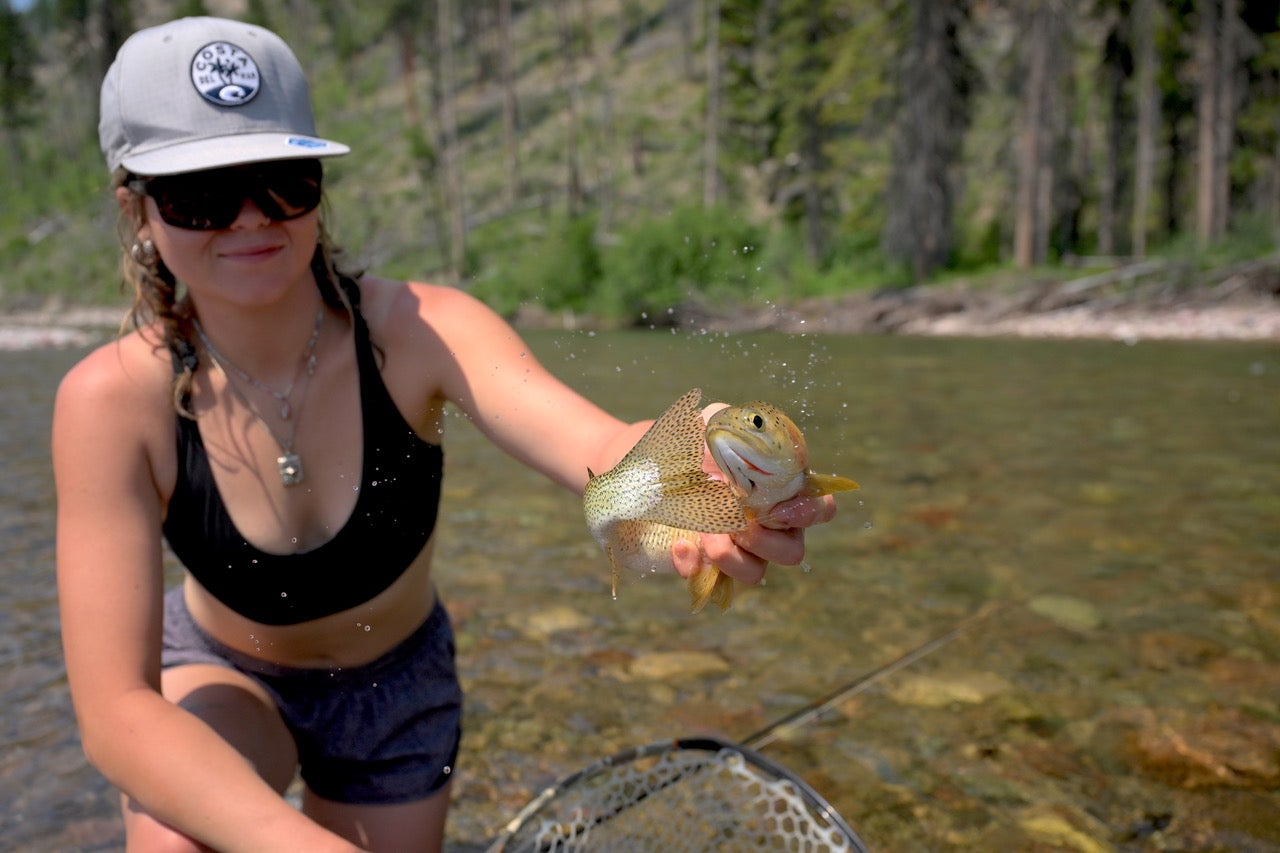
Author Greg Thomas's daughter, Tate, holding a fresh catch on the South Fork in 2024. (Photo: Courtesy Greg Thomas)
Table of Contents
Wading streams with a fly rod in hand may be the most traditional approach to the sport, but floating rivers in a raft or driftboat, leisurely watching the scenery pass by, has its merits too. The newest fly-fishing gear reviewed here is equally versatile in or out of a boat, giving you the option of all-day backcountry jaunts or those days spent close to the cooler, feet kicked up on the bow, lofting big dry flies to eager trout and bass, and anything else that eats a fly on a warm summer or fall day.
We spent the summer letting out our lines across the Pacific Northwest and western Canada in spring creeks, lakes, and rivers. Whether you fish from a raft or boat, or hike to less-pressured fisheries, our favorite fly-fishing rods, lines, and fishing accessories of 2025 are sure to come in handy and earn a permanent spot in your gear box.
Best Fly-Fishing Gear: At a Glance
- Best Freshwater Rod: Scott Session 9’ 5-Weight ($695)
- Best Reel: Lamson Guru S Blackout ($300)
- Best Line: Scientific Anglers Amplitude Double Taper ($100)
- Best Gear Box: Yeti Loadout GoBox 15 ($125)
- Best Fly Puck: Fishpond Shallow Mag Pad Fly Puck ($8)
- Best Backpack: Fishpond Roll-Top Backpack ($230)
- Best Sandal: Teva Outflow ($100)
- Best Single-Person Raft: NRS Boundary 100 ($1,875)
- Best Sunglasses: Costa Sunglasses ($359)
- Best Rain Jacket: Patagonia Rain Jacket ($229)
- Best Fly-Fishing Waders: Simms Stockingfoot Wader ($1,000)
- Best Wading Boots: Patagonia Wading Boots ($299)
The Reviews: The Best Fly-Fishing Gear
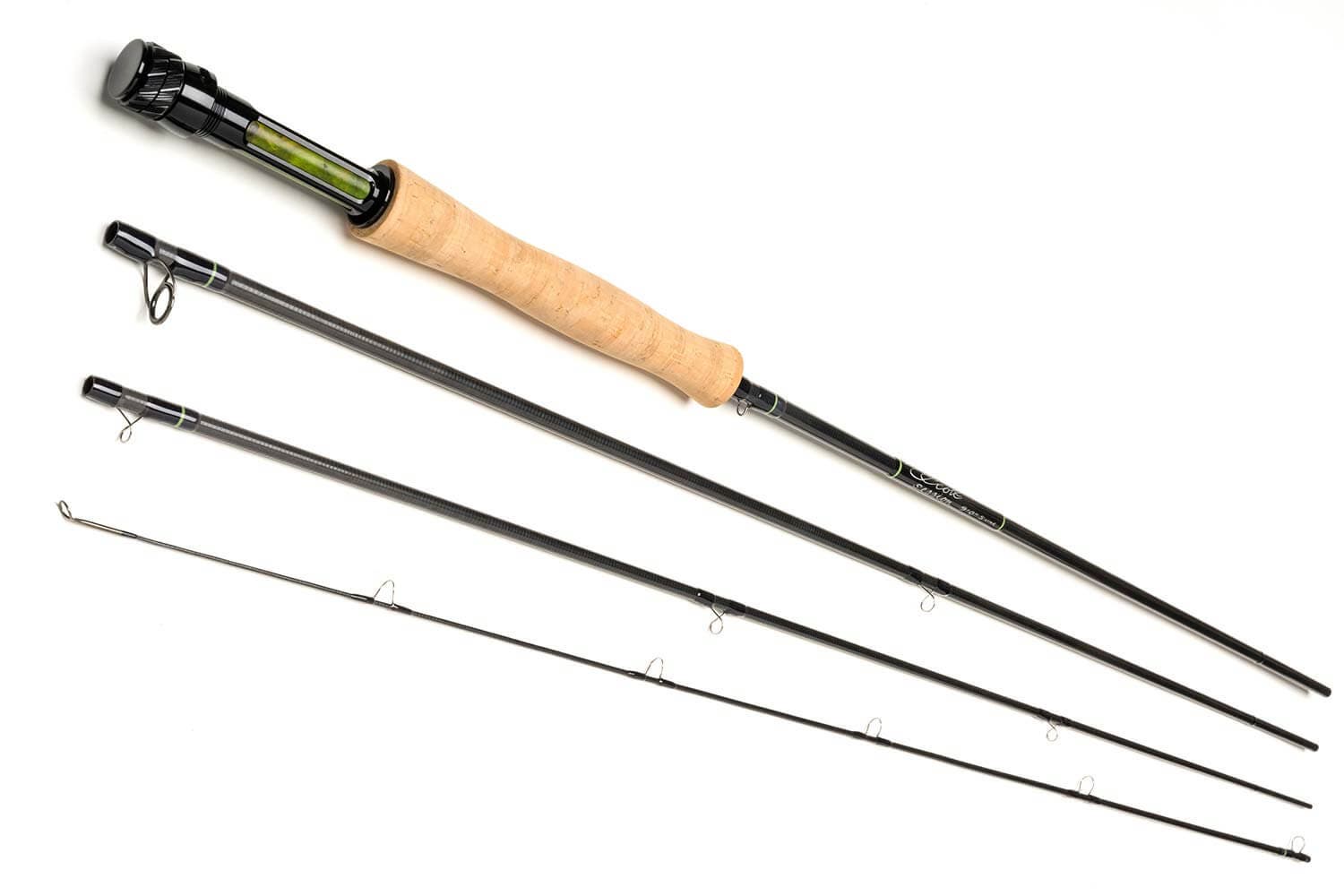
Best Freshwater Rod: Scott Session 9’ 5-Weight Fly Rod
Weight: 5; 85 g
Length: 9 ft
Action: Medium-fast
Pros and Cons
⊕ Quick, relatively strong, and very accurate
⊕ Excellent all-around trout rod
⊕ Good value
⊕ Sensitive tip protects light tippet when casting small flies
⊗ Not great in strong wind
I like throwing far when fishing trout, trying to get that bankside bruiser that always seems to be 70 feet away and smashing caddisflies next to a logjam. I won’t get that guy with a medium-action three-weight, and I might not even reach him with a faster-action four-weight. But, I know one thing: I can stick the cast and have a shot at that fish with Scott’s new Session rod in the 9-foot, 5-weight version.
The Session is not a stiff rocket launcher. Instead, it’s light in the hand with a strong butt and sensitive tip, and casts well at all distances, though not when there’s heavy wind. That light tip protects tapered leaders in the 5X and 6X range, even when setting up on large trout. But the rod still casts heavier flies accurately and gently—this rod has you covered whether throwing small, size-18 dries on spring creeks or larger size-8 stoneflies on major rivers. That medium-fast action nestles the Session between Scott’s fast-action Centric and medium-action G series. Although the rod weighs just 85 grams, the Session is built with a large diameter, thin-wall carbon blank that provides enough power to fight a fish, quickly get it in the net, and send it back on its way unscathed.
While it’s more affordable than the Centric and G series, it’s not a budget rod: The components are top-of-the line and the rod comes with a beautiful box, elder wood reel seat, silicon nitride stripping guides, and wire snake guides through the length of the rod.
If you’re looking for a do-all freshwater trout rod that’s strong enough to handle bass, carp, and smaller pike, too, this might be the one.
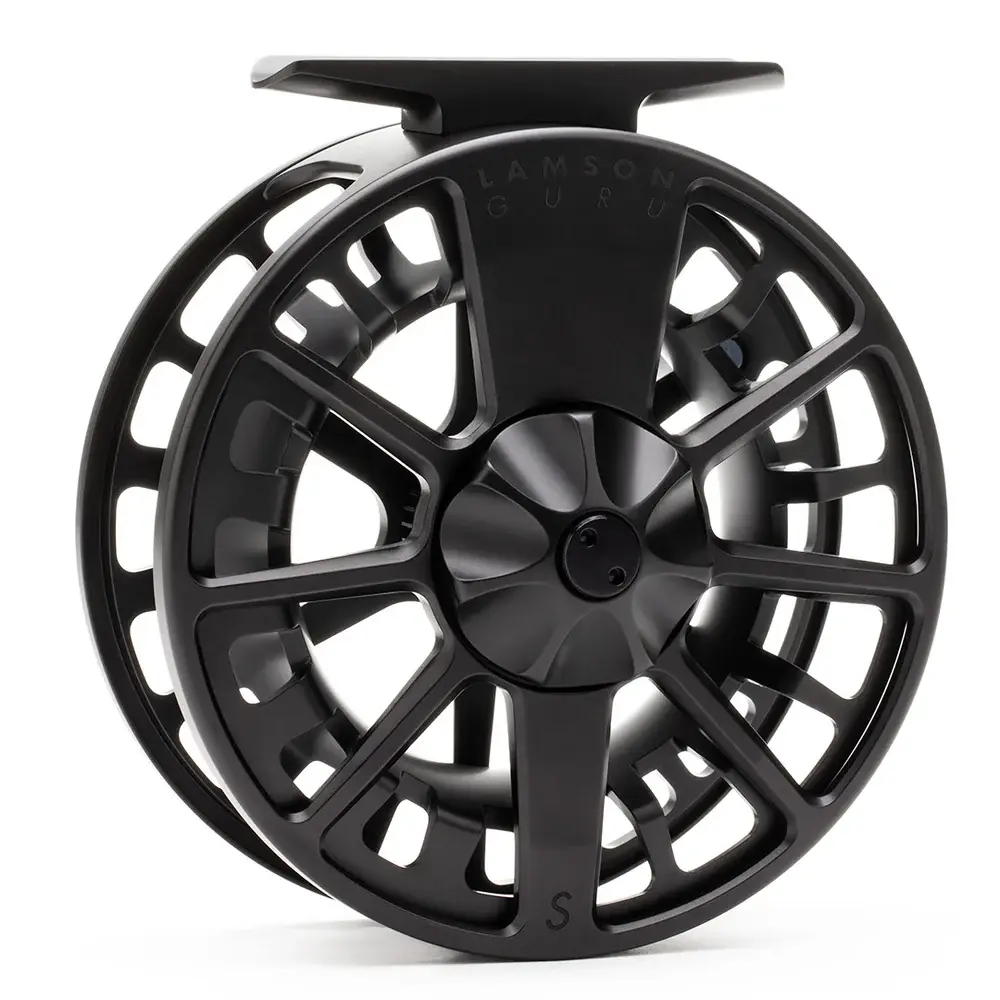
Best Reel: Lamson Guru S Fly-Fishing Reel
Weight: 4.41 oz (5+-wt)
Sizes: 3+, 4+, 5+, 7+, 9+
Pros and Cons
⊕ Fail-proof sealed drag
⊕ Full cage design
⊕ Large arbor
⊗ Limited backing capacity
We packed the Lamson Guru S to Alaska, fished it in the Idaho and Yellowstone backcountry, and banged it around in driftboats from Montana to Utah to Oregon to Washington, and all the way back home again. Fully machined for strength, this reel held up to the abuse. Its anodized “Blackout” finish remained unblemished even as the reel scraped along the inside of driftboats and banged into trees and rocks as we scrambled into remote trout waters. Its full cage is compatible with standard fly lines, and the spool sits fully within the frame so monofilament won’t escape into a seam and freeze the spool when stripping out or retrieving line. Quickly change between floating lines, sink-tip lines, and Euro systems by placing a thumbs behind the spool and pushing outward.
The reel’s new and larger arbor allows quick retrieval of line and the sealed drag is dependable and strong—when needed, we could crank it down and prevent large fish from reaching obstructions. Our only regret is the backing capacity; we would have liked a little more in case a big Alaska rainbow raced through rapids, sending us scrambling through the brush in pursuit. All in all, this reel is as dependable as they get.
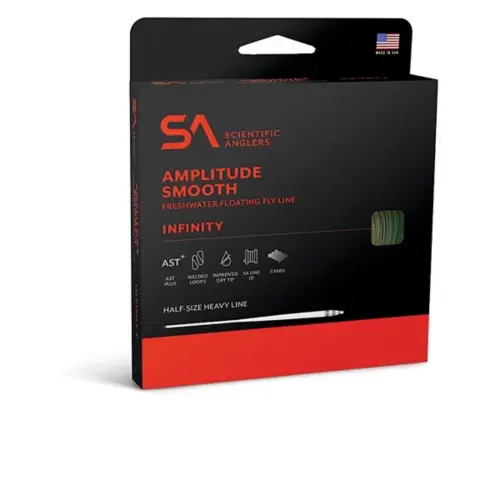
Best Line: Scientific Anglers Amplitude Smooth Freshwater Floating Fly Line Double Taper
Line Weight: Double Taper 5-Weight
Total Length: 90 ft
Grain Weight: 150 g
Pros and Cons
⊕ Easy to lift line off the water and recast
⊕ Allows efficient and lengthy roll casts
⊕ Long taper and light tip affords subtle dry-fly presentations
⊗ Not ideal for streamers and large nymphs
⊗ Difficult to punch through the wind
For budget-conscious anglers who want a line that serves well in most conditions, the Amplitude Smooth Double Taper is your ticket. Welded loops on each end of the line allow easy attachment to the backing and leader, and Scientific Anglers’ proprietary AST Plus slickness additive makes it easy to shoot the line through the guides. The line is also marked with an ID so you don’t forget what you’re casting.
Buying a double-taper fly line is like getting two for the price of one: When one end of a double taper wears out, you can reverse the line to have a pristine end to work with. The Amplitude Smooth has an elongated and light front taper that lands gently and excels on challenging spring creeks, tailwaters, and lakes, where minimal surface disturbance is required—like when casting dry flies. That’s especially important when pursuing large, crafty trout on heavily fished waters, such as Idaho’s Henry’s Fork and Silver Creek, Wyoming’s Flat Creek, and Montana’s Clark Fork. Use a heavy weight-forward line on those waters, and you’ll see fish bolt for the undercut banks.
That said, the Amplitude Smooth Double Taper isn’t a great choice if you primarily fish large, choppy freestone rivers—it’s too light to easily cast large dry flies, nymphs, and streamers, and, what you gain in stealth you may lose when the wind blows—it’s difficult to punch this line through heavy wind. But if you’re trying to be stealthy, then this line is your best bet.
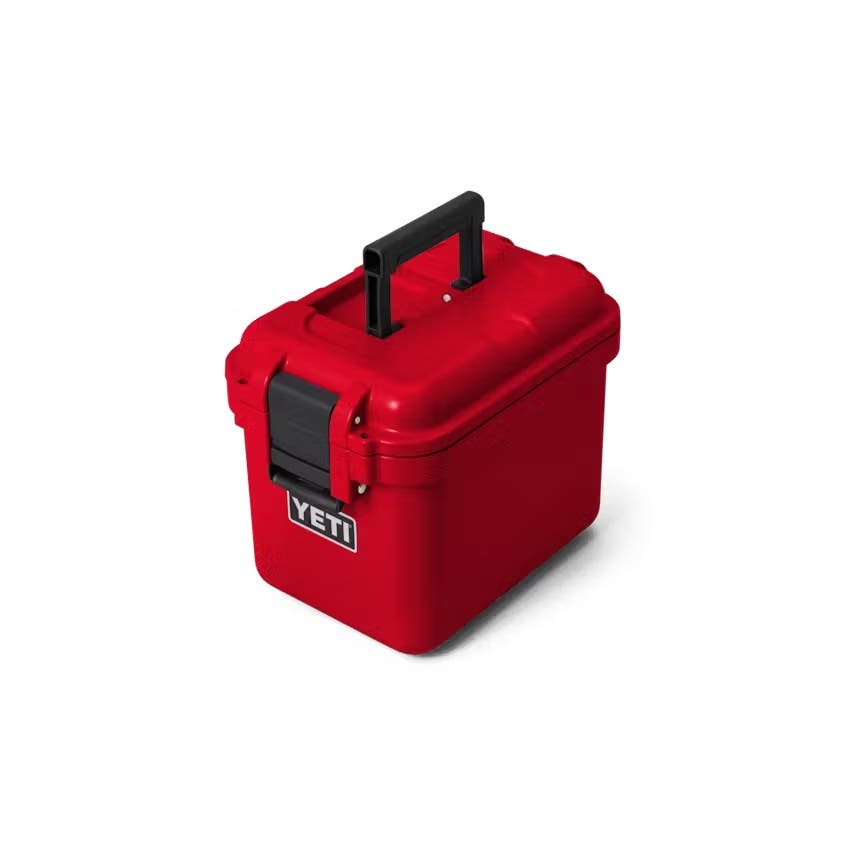
Best Gear Box: Yeti Loadout GoBox 15
Weight: 7.5 lbs
Size: 11.3 x 14.7 x 10.2 in
Pros and Cons
⊕ Completely waterproof
⊕ Easy to carry and stack
⊕ Dual compartments store essentials
⊕ Removable shelf provides essential organization
⊗ No zippered mesh storage pocket
⊗ Not soft-sided so it won’t “crush” into tight places
This year Yeti introduced the Loadout GoBox15, a smaller version of the Loadout 30 and Loadout 60 gear boxes. With anglers gravitating to smaller and more agile watercraft for fly fishing, the 30- and 60-liter gear boxes seem like overkill while the 15 fits nicely in small boats and single-person rafts. I even prefer the Loadout 15 in my 17-foot-long driftboat—it carries all the essentials, including leaders, tippets, fly boxes, keys, wallet, phone, camera, bottle opener, readers and a monocular (for subtly checking out other anglers), right at my feet.
The Loadout GoBox15 has a removable top tray and larger cargo area beneath, perfect territory for oversized fly boxes, extra reels, and sunglasses. It allows access to those essentials without unlatching and lifting boat seats, or fighting to get into and out of a roll-top backpack—a time-saving element that keeps your fly on the water and your eyes focused ahead.
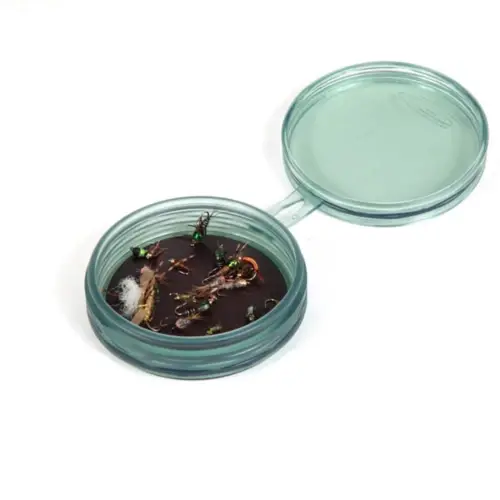
Best Fly Puck: Fishpond Shallow MagPad Fly Puck
Weight: 3 oz
Size: 3.125 x 3.125 x 1 in
Pros and Cons
⊕ Stackable lid system
⊕ Tight waterproof seal
⊕ Magnetic bottom holds flies to base even when inverted
⊕ Made of nearly indestructible molded TPU
⊕ See-through lid
⊗ Limited carrying capacity
⊗ Not well suited for large flies
Over the years I’ve packed more flies than I ever needed, expecting to encounter some obscure hatch where every 24-inch trout in the river was on the rise and I worried I wouldn’t have what the fish demanded. Truth is, on most trout waters, you don’t need more than a dozen patterns to cover any hatch you might encounter. FishPond’s Shallow Mag Pad Fly Puck easily holds a few dozen small flies on its magnetic base. A see-through lid allows you to quickly identify the flies without having to fiddle with each puck—not what you want when a hatch is short-lived and you need the right fly on the water, pronto.
Not enough room in one puck? Each one has a “lip” that easily attaches to the base of other pucks, allowing anglers to carry small nymphs in one, small dries in another, and even split shot and/or strike indicators in another. Once organized and stacked, you can throw these pucks in a backpack or slingback and head to the water with confidence—you’ll likely have every pattern you need. Worth noting: These pucks are not suited for large nymphs and streamers, which require a standard-sized fly box. This is a low-bulk, lightweight packing solution for minimalist anglers who are prone to hiking in and earning their fish.
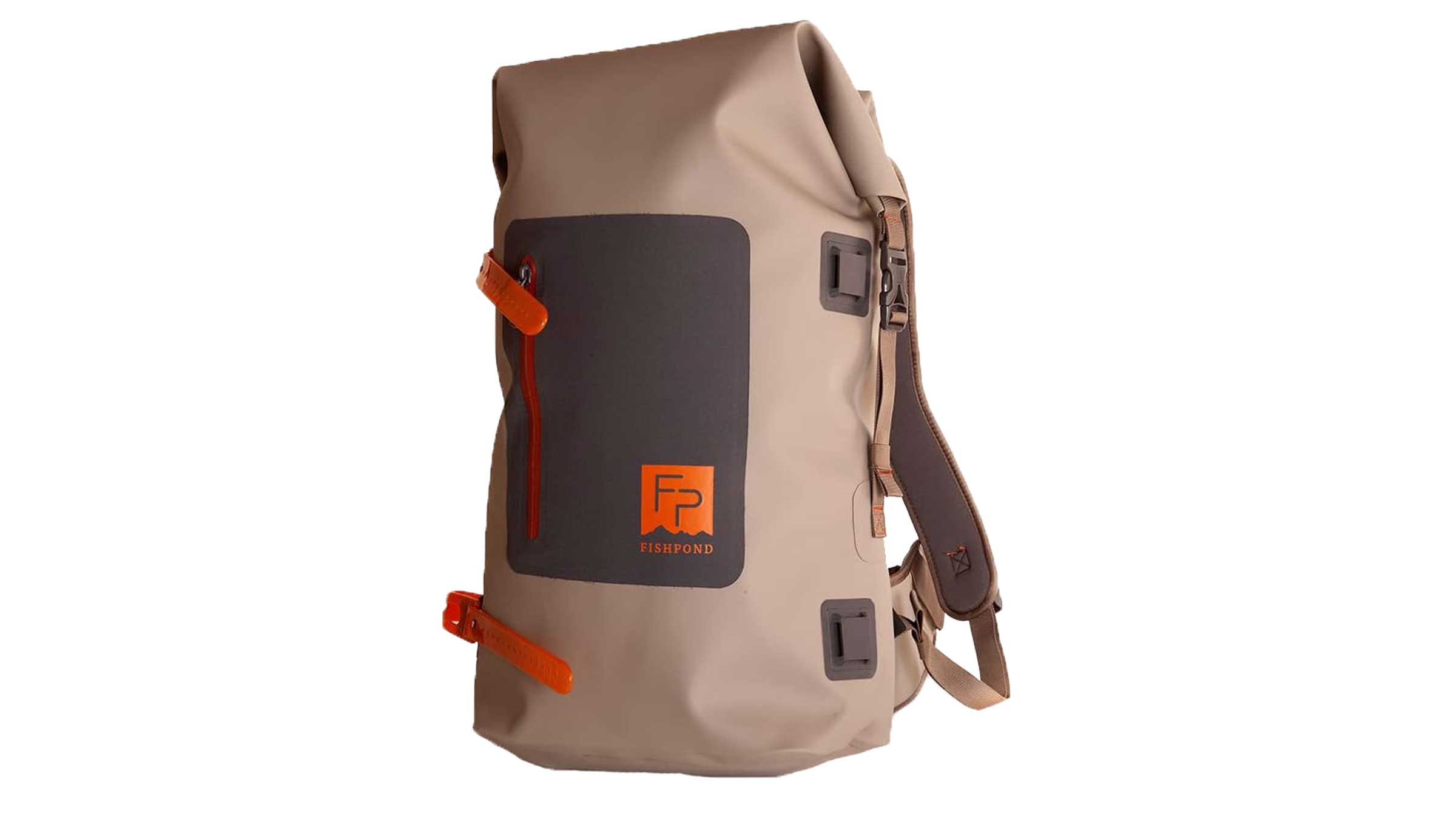
Best Backpack: Fishpond Wind River Roll-Top Backpack
Weight: 3.6 lbs
Size: 38L; 31 in tall unrolled; 24 in rolled three times
Pros and Cons
⊕ Keeps gear dry
⊕ Carries two rod tubes
⊕ Removable hip belt
⊗ No exterior side pocket for water and/or bear spray
We carried this soft-sided pack to Alaska, testing it during a challenging week of weather that ranged from light drizzle to full-blown rain and gale-force winds that grounded floatplanes for days. We tossed the Wind River onto the floors of open aluminum skiffs, packed it through the willows and head-high grasses, and the rugged TPCU-coated exterior, combined with roll-top security, kept our gear—including cameras and lenses—dry. The new Wind River offers a thermoformed back panel and an adjustable hip belt that always kept us comfortable. The hip belt is also removable, which allowed this bag to easily slide into overhead compartments on commercial flights and slip, unencumbered, into the piles of gear that ride in a floatplane’s rear fuselage and pontoons. Note: Alaska pilots detest hard-side roller duffels and they’ll tell you as much (they aren’t pliable, take up more space, and are heavier than soft-sided gear). Luckily for us, the Wind River passed the pilot’s soft-sided test for packability. Plastic straps on the front of the bag allowed us to carry two rod tubes at a time.
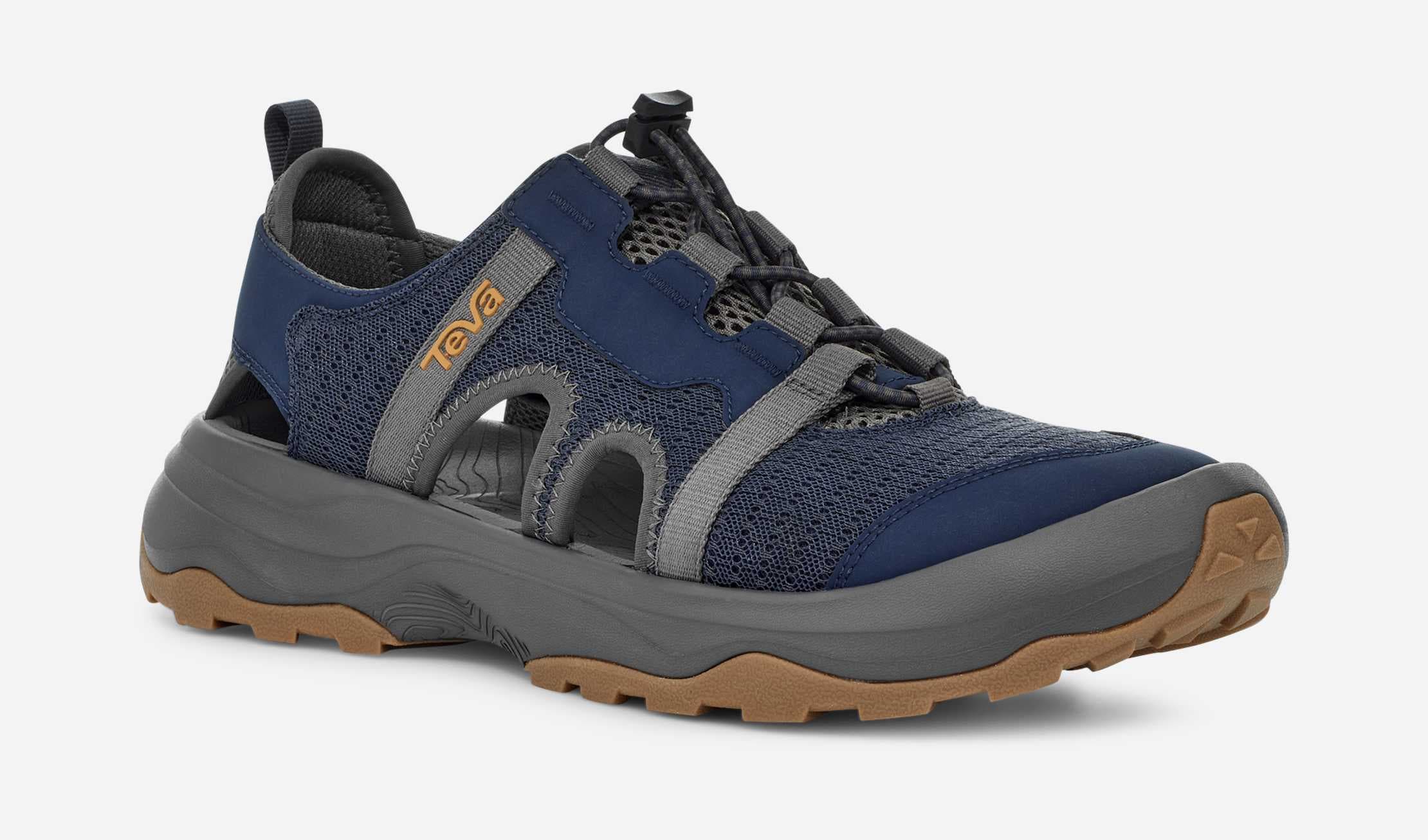
Best Sandal: Teva Outflow Universal Water Sandal
Weight: 13 oz per sandal
Sizes: 7-14 (men’s); 5-11 (women’s)
Pros and Cons
⊕ Lightweight
⊕ Comfortable
⊕ Boat-friendly rubber sole
⊕ Adjustable bungee cord lacing
⊗ Slippery on submerged rocks
⊗ Debris can filter in from sizeable drainage ports
When fishing on hot summer or early fall days, you don’t always need the standard issue (and often-cumbersome) wading boots. Instead, you can forgo waders and boots and simply wet wade in a pair of quick drying shorts or pants, and a pair of wading sandals. The Teva Outflow sandals are a great lightweight option for hike-in fishing and raft-friendly.
My daughter and I did just that on Montana’s South Fork Flathead River, riding 40-some miles into the Bob Marshall Wilderness on horses, then floating out for four days in rafts. We mostly fished from the boat, stopping here and there to wade the deeper pools, nailing eager westslope cutthroats by the dozens while also searching for native bull trout. The Teva Outflow sandals proved comfortable and offered decent stability when we led our horses for miles on end (up to 45,000 steps a day). A sturdy, molded footbed makes these sandals feel like light hikers, yet the closed-toe offers excellent protection—key when you’re 40 miles from a road and a bad cut could turn into a serious situation.
We slipped and slid on submerged rocks a bit, but getting a little wet on a summer day isn’t like falling into the drink in November or May, and the sandals dried quickly around our evening campfire.
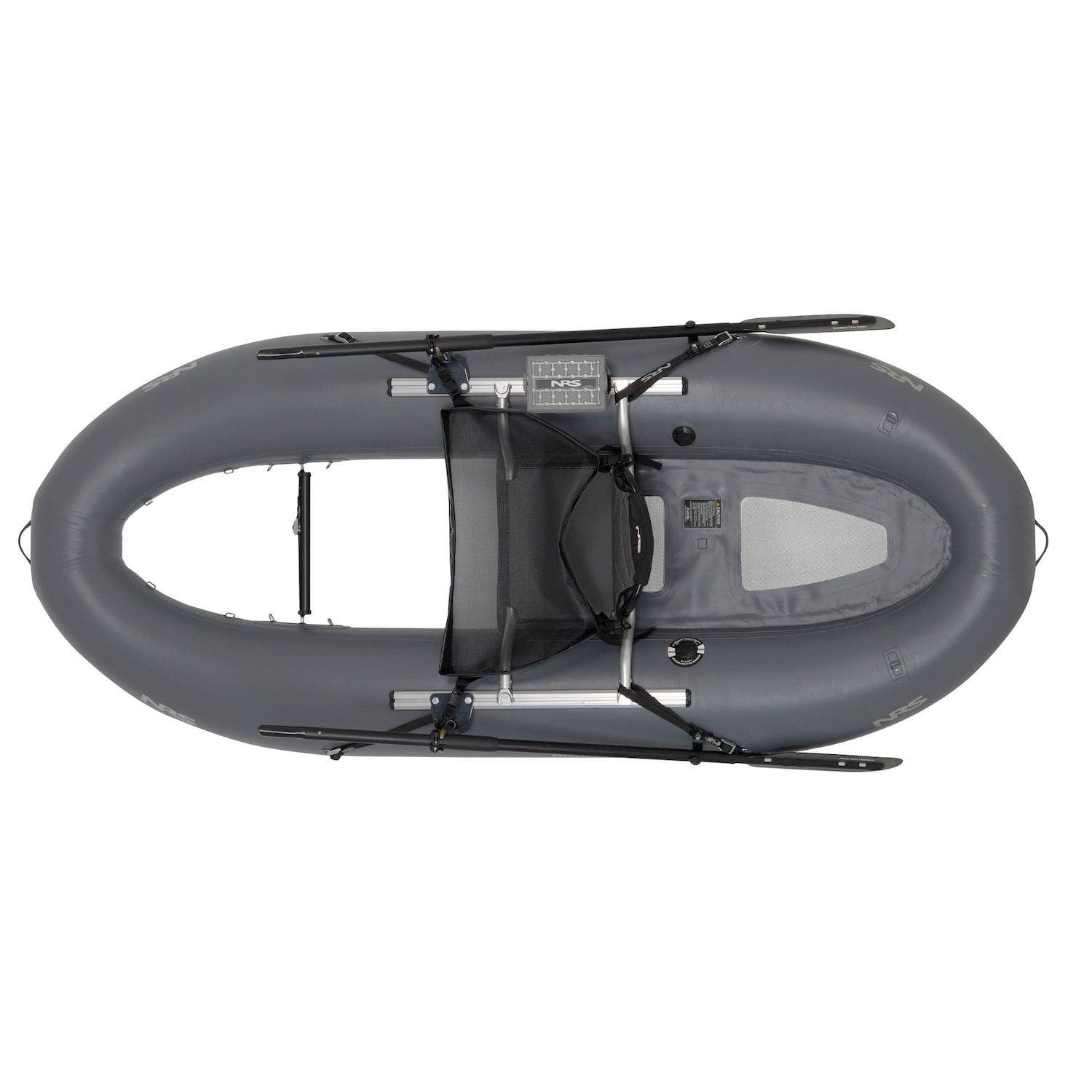
Best Single-Person Raft: NRS Boundary 100
Weight: 50 lbs
Length: 10 ft
Carrying Capacity: 475 lbs
Pros and Cons
⊕ Suspended rear cargo deck
⊕ Adjustable flat rail frame allows custom oar positioning
⊕ Solid frame and oarlocks provide ultimate leverage and control
⊕ Two large air chambers for safety
⊗ Doesn’t have a carrying bag
⊗ Not the most portable
⊗ Anchor system not available
For ten years, I fished southwest Montana’s blue ribbon trout waters in a single-person Watermaster Kodiak raft and thought it was the best raft out there. But NRS’s new Boundary 100 is an upgrade over the Watermaster in several key areas.
First, it comes with a solid rowing frame and drop-forged aluminum oarlocks—which trump the Watermaster’s built-in, hard plastic oar mounts—providing significantly more power and control to the craft, especially in heavy and fast water. The oars float freely in the oarlocks, meaning you can pull the handles toward the center of the boat when slipping through tight spots. When not in use, tuck them into the oar sleeves to keep the blades out of the water. In addition, the Boundary 100 offers a stable, mesh-backed and foldable rowing seat, plus cargo space in the back of the raft to store gear, including boat boxes, spare rods, a cooler, and camping supplies.
The Boundary 100 has an open floor design, which means you can control the raft with your legs and fins—helpful when fishing stillwaters, but not an efficient maneuvering method on fast-moving rivers and streams. Still, an open floor allows anglers to simply stand up in shallow water and start fishing, with all their gear close by, versus having to pull a large boat or raft to shore and step out. However, an anchor system is not available for this raft, which means you have to keep it around your legs or place it on shore if you don’t want to see it float away. This raft is the solution for anglers who like to test backcountry waters and slip into areas that larger rafts can’t access. With a generous cargo area, anglers can take more than enough gear for overnighters or multi-day floats.
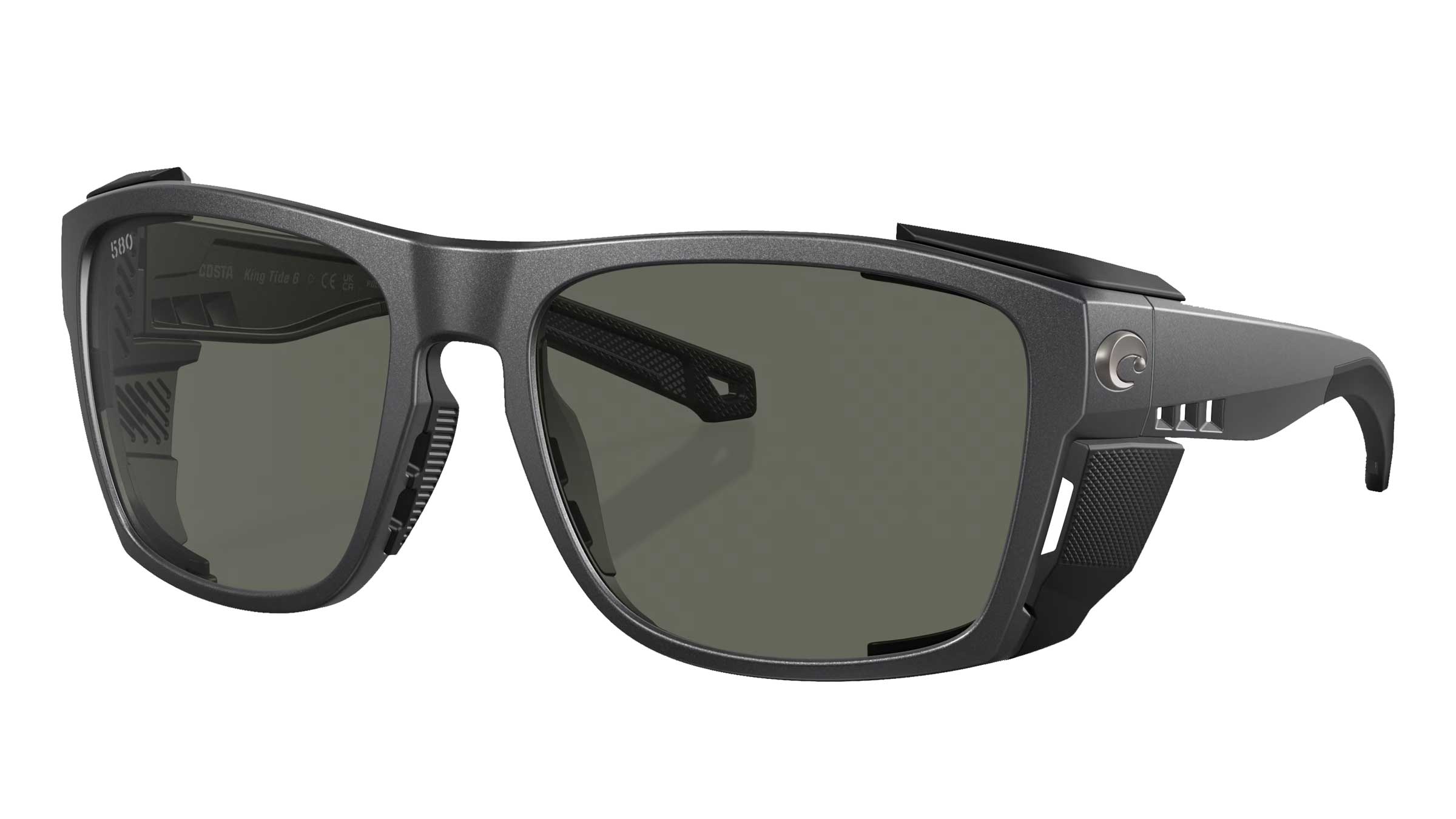
Best Sunglasses: Costa King Tide Sunglasses
Weight: 8-base frame 49g (including side shields and lenses); 6-base frame 48g
Size: L
Pros and Cons
⊕ Pair with any 580 lens
⊕ Removable side shields offer full light blockage
⊕ Adjustable nosepiece allows custom fit and excellent ventilation
⊕ Non-skid material on top of frame
⊕ Available in RX
⊗ Pricey
⊗ One frame color
I didn’t need Costa’s King Tide shades to see the bluefin tuna off Southern California’s Coronado Island—those breezers often broke the surface within the boat’s casting range. But, I was very grateful for their protection during what, unexpectedly, turned out to bea 16-hour day on the ocean, partly in the glaring sun. The removable side shields offered excellent light and wind protection, and the adjustable nose piece held the frame off my high cheeks and kept the air flowing to prevent any fogging. Their rubber, non-slip pads (located on the top of the shields) held the sunglasses in place when I set them on various surfaces, even while we were pitching on the Pacific. Word to the wise: If you do remove the side shields, the King Tides slide off surfaces like any other glasses, which risks shattering lenses. The King Tides are available in a variety of 580 lens tints. For testers, Blue Mirror and Green Mirror worked well on the Pacific, and Copper/Silver Mirror and Sunrise/Silver Mirror were solid choices for freshwater.
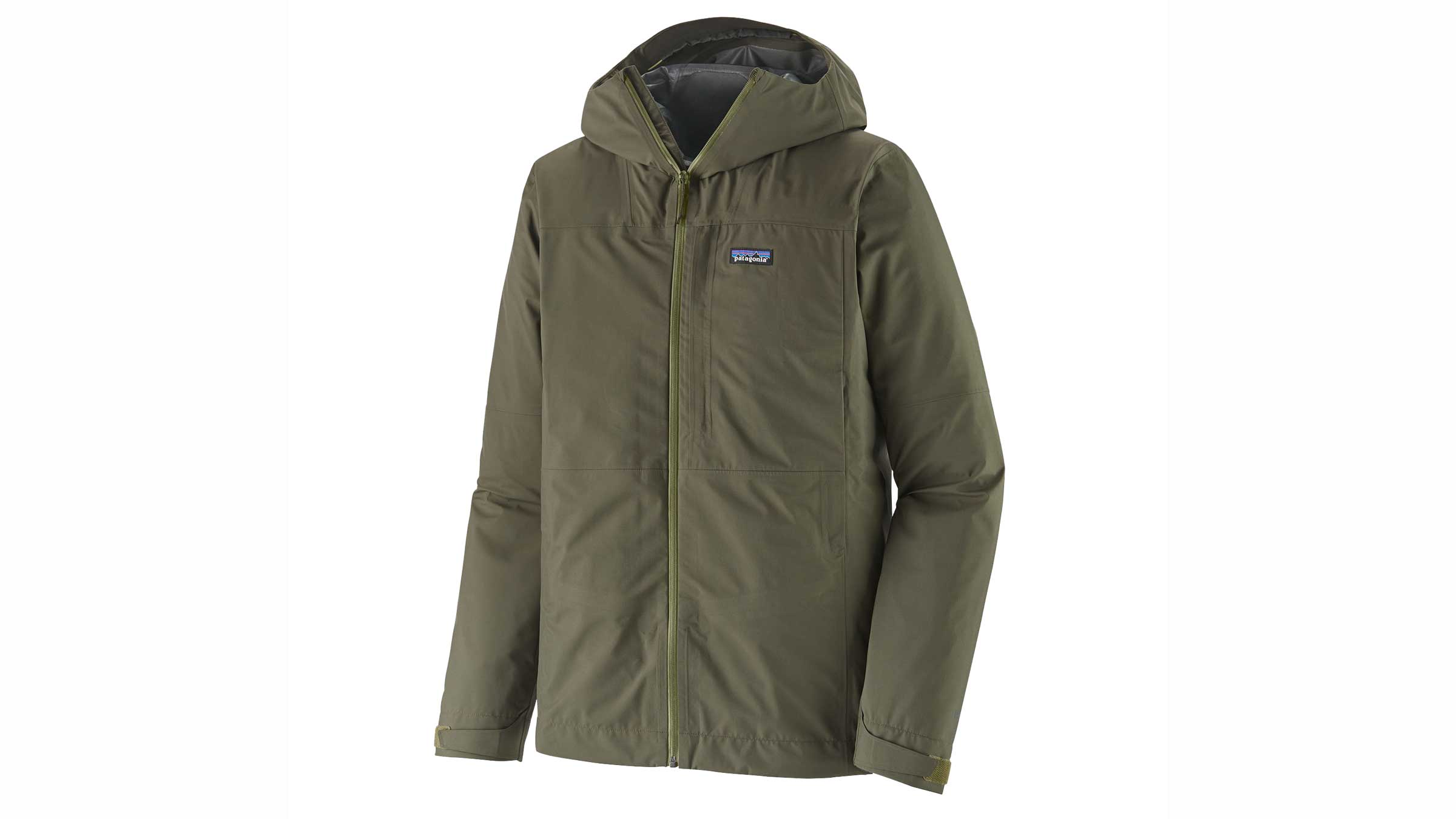
Best Rain Shell: Patagonia Boulder Fork Rain Jacket
Weight: 3.7 oz
Sizes: XS-XXXL (men’s); XXS-XXL (women’s)
Pros and Cons
⊕ Streamlined
⊕ Low bulk
⊕ Three large pockets
⊕ Longer cut for additional protection
⊗ Longer cut could allow water in hand pockets during deep wades
You can get more pockets, zippered ventilation, and neoprene cuffs on fly-fishing-specific jackets, but those extra features add bulk and weight, which doesn’t serve well when hitting off-the-grid waters. This streamlined 3-layer jacket with DWR coating kept us dry and didn’t snag when we crept through the brush and morning dew on northern Idaho’s native cutthroat waters. The jacket packs down to softball size and is easily stuffed into our waistpacks and daypacks. A large fly box fit nicely in the lay-flat chest pocket, which gave us adequate fly choices during full days in the backcountry. Two side pockets held additional gear, such as split shot, gloves, and tippet. An adjustable draw-cord hood fit well, whether we wore a ball cap or stocking hat, and effectively prevented windblown rain from creeping past the collar and down our necks and backs.
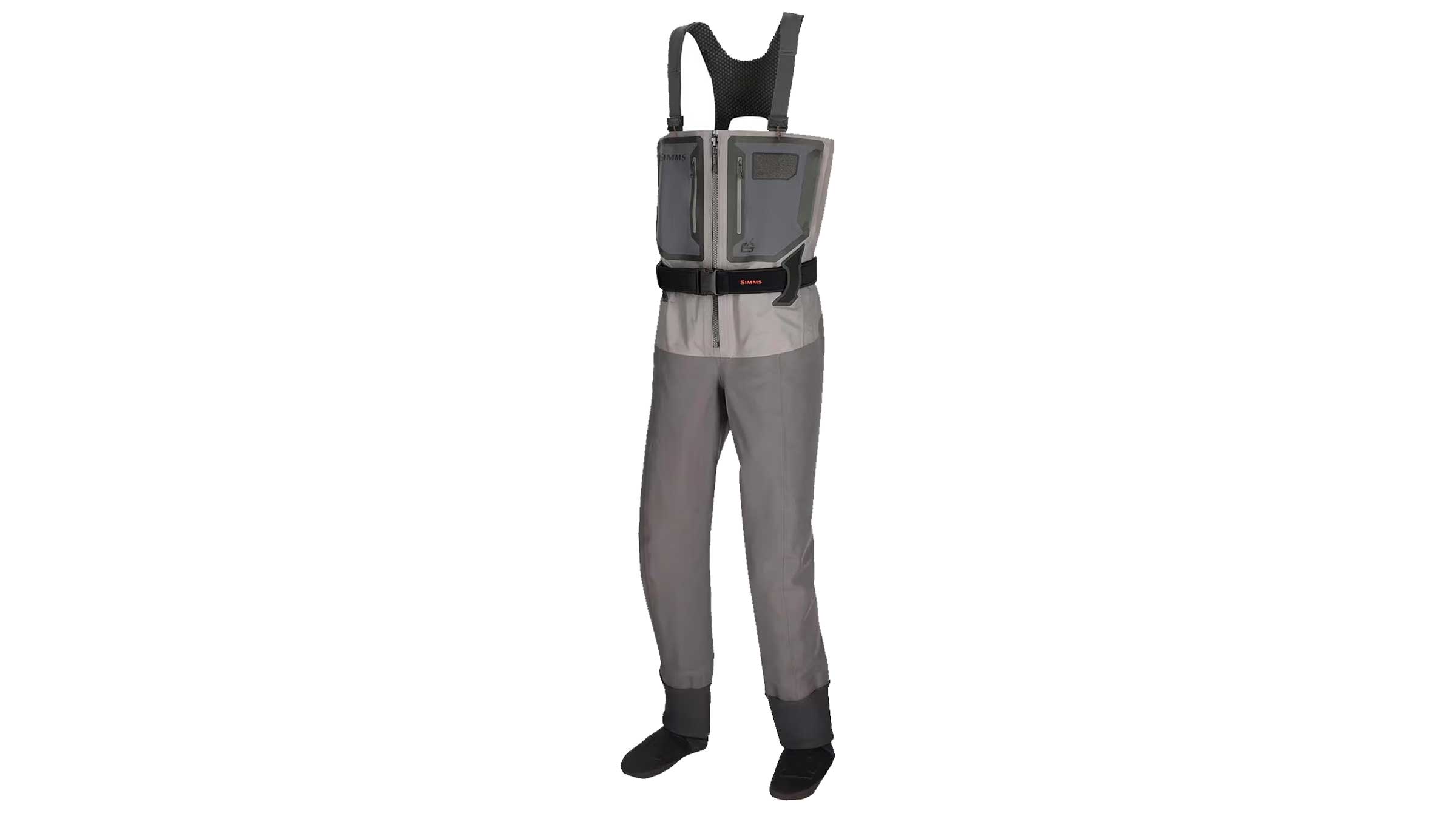
Best Fly-Fishing Wader: Simms G4Z Stockingfoot Waders
Weight: 47.2 oz
Sizes: S, M, MK, L, LK, XL, XXL
Pros and Cons
⊕ Sleek and easily adjustable harness/suspender system
⊕ Bonded center zipper more pliable/comfortable than previous stitched-in models
⊕ Two interior, fully submersible zippered pockets
⊗ Pricey
⊗ Hot on warmest summer days
I never wanted a Cadillac, nor could I have afforded one, but I’ll sure hit the water in Cadillac-quality waders, which is exactly what the SimmsG4Zs are. These waders offer a new sleek harness and suspender system that’s easily adjusted by lockdown clasps, and the excess suspender straps slide into external chest pockets, which makes on-the-water fit adjustments a snap. Simply unlock the clasp, place a hand in a front pocket, pull down on the strap, and re-lock for a secure and custom fit. Simms also extended the wader’s four-layer Gore-Tex Pro Shell fabric to the crotch and seat, making these more robust in the highest wear areas, a design touch we appreciate in an expensive wader. The upper portion of the wader is a three-layer Gore-Tex Pro Shell material, where a front and center zipper is now bonded, rather than stitched, to the fabric.. The result of that three-layer fabric and bonded zipper combination is a more pliable and therefore comfortable feel. We also liked the generous fit that was easier to get in and out of than other waders we tested.
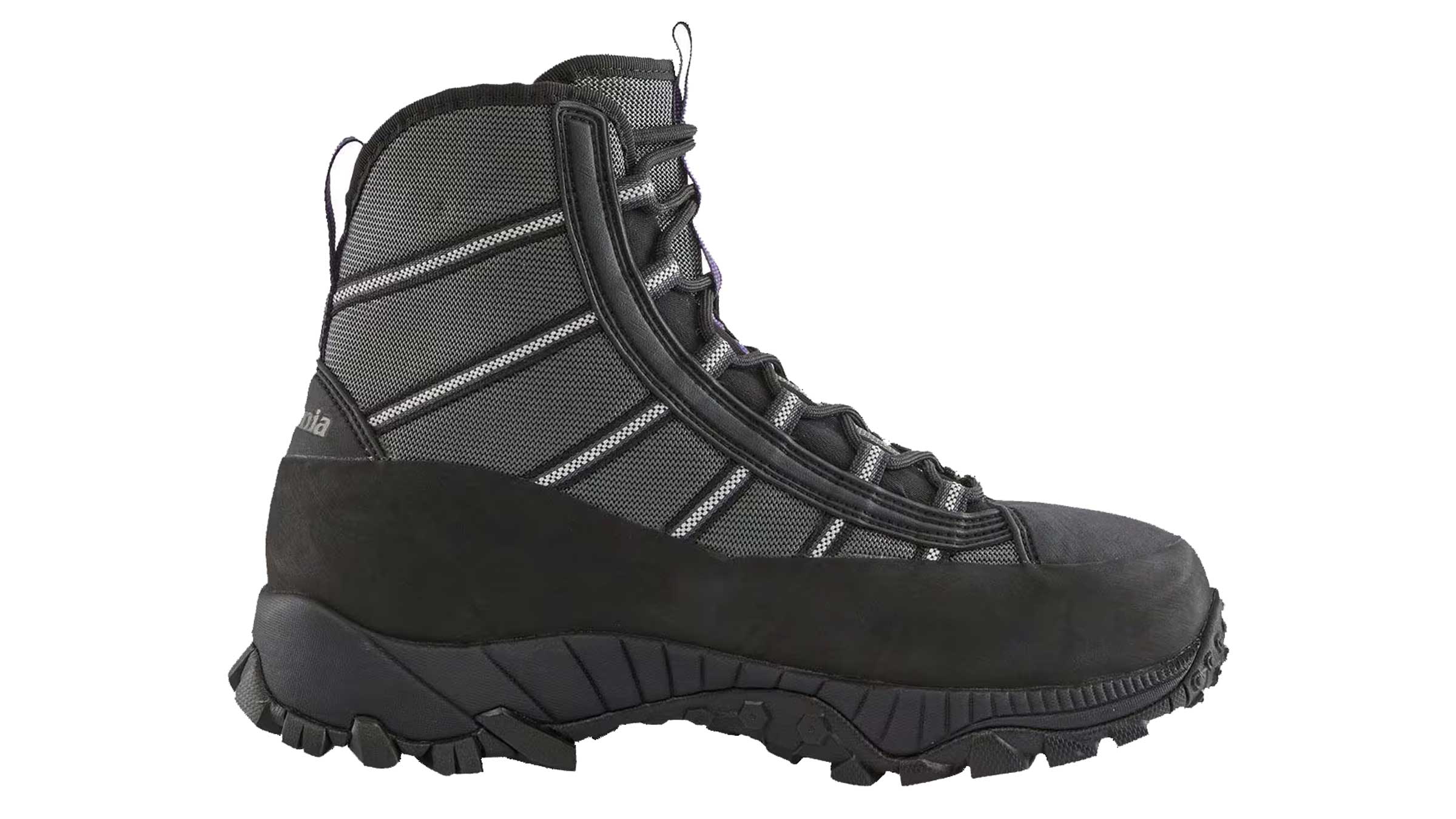
Best Boots: Patagonia Forra Wading Boot
Weight: 41 oz
Pros and Cons
⊕ Lightweight
⊕ Quick drying
⊕ Comfortable enough to hike in
⊗ With no foam backing on the upper they could rub the ankle bone
There are a few main reasons I would own Forra boots: they are lightweight, they lace tight, offer excellent toe and heel protection, and are perfect for all-day hikes and overnights. The mostly dry upper dries fast and helps keep the weight down, which was nice for backcountry missions, and stuffing them in our duffel for flights.
However, we should all take Patagonia’s marketing verbiage, “super sticky grip” and slime-defying grip,” with a grain of salt. I would not dare wade the Madison, Clearwater, or Lochsa rivers (among others) without studs on these boots. Fortunately, they are available with a stud kit ($49), which makes this a non-issue.
How to Choose Fly-Fishing Gear
Do I need waders for summer fly-fishing?
This question all depends on air and water temperatures. For instance, in the northern Rockies, even the dog days of summer may begin in the 40-degree range. With an early start, sans a solid base layer and waders, you might whimper back to the rig and wait for the sun to rise high. In Alaska, you might not even see the sun for a couple of days. In addition, waders protect you from stinging/biting insects and thorny vegetation. Wet-wading is a summer treat, but you should always have waders for backup against the weather, including summer thunderstorms that sometimes drop multiple inches of hail, and air temperatures by 20 or 30 degrees Fahrenheit in an hour.
Which dry flies do I need for summer fly-fishing?
You’ll need different flies for the different regions you fish. In general, you’ll cover mayfly, caddis, stonefly, and terrestrial hatches. Below is a quick guide to matching each of the below flies:
- Mayflies (sizes 14, 16, and 18): Parachute Adams’, Purple Hazes, Sparkle Duns, Rusty Spinners, and Quigley Cripples
- Caddis (sizes 12, 14, and 16): Caddis Variant, Cornfed Caddis, Peacock Caddis, and Outrigger Caddis
- Stoneflies (sizes 4, 6, and 8): Stimulators, Water Walker Golden Stones, Rogue Foam Salmonflies, and Morris Fluttering Stones
- Ants (sizes 4, 6, and 8): Amy’s Ant and Ant Acids
- Hoppers (sizes 14 and 16): Parachute Hoppers and Morrish Hoppers
Do I need polarized sunglasses to fly-fish?
Technically, no. However, being able to see contrast and definition under the surface of the water gives an angler a huge advantage. You’ll spook fewer trout, see structures (boulders, logs, matts of grass) that attract fish, and you’ll avoid debris that might cause a stumble and fall in the water. Plus, you have a better shot at seeing fish before they see you.
How We Test
- Number of Testers: 3
- Number of Products Tested: Over 30
- Number of Bodies of Water Tested in: 26
Three of us packed gear around for 11 months, visiting prime water in Montana, Idaho, Yellowstone, Alaska, Washington, Oregon, Utah, and even Mexico. We prefer backcountry, hike-in, strenuous waters, but we spent plenty of afternoons floating in driftboats and rafts, too. We fished in cold spring rain and snow, cool and perfect spring days in May and June, and we fished the after midnight and early sessions when daytime temperature restrictions set in. We matched Baetis, midges, blue-wings, caddis, PMDs, drakes, and hoppers, too. We threw meaty streamers for the big boys and plucked little eager cutthroats from small creeks we we needed a break from the grind. There’s plenty of great product out there, at all price ranges, but these stood out to us as extremely useful and worth owning. Pack any of these items to the water this year and we think you’ll be happy you did.
Meet Our Testers
Greg Thomas is the owner of Angler’s Tonic and the former editor-in-chief of Fly Rod and Reel and American Angler magazines. He’s the author of Fly Bible: Montana and Fly Fisher’s Guide to Washington and, especially, enjoys time in the backcountry, hiking with his Labrador, Rye, casting to native fish in oft-overlooked places. He lives in Missoula, Montana.